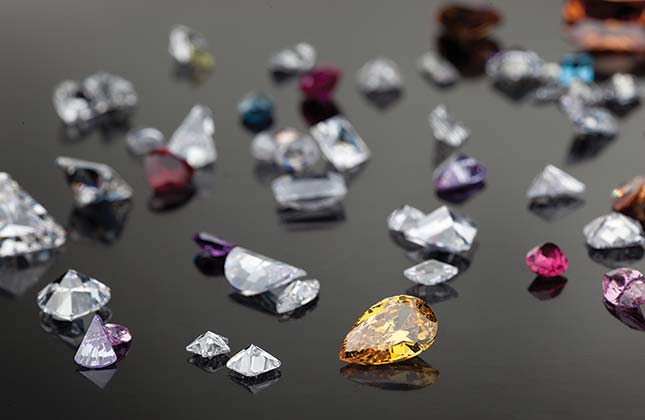
On Selling Gemstones: Color Transparency
How disclosure can help you close more sales.
Published in the July 2014 issue
When selling gemstones, full disclosure can build a huge amount of trust with customers. But how do you incorporate disclosure in your presentation, and how can it help you close a sale?
It starts with the crafting of a compelling story. Customers love to hear the stories behind their jewelry, and colored gemstones come with far more intriguing stories than do diamonds. We can talk about the myriad styles of cutting, the wonderful gradations of color, and the exotic sources of gemstones. Perhaps the most intriguing aspect of colored gems, however, is the very source of their color. While some gems, such as members of the garnet family, diopside, and peridot, normally arrive in your store with nothing having been done to alter their appearance other than cutting and polishing, many others have been enhanced to improve their appearance. Enhancing the appearance of natural gems goes back thousands of years. Pliny, who died when Mount Vesuvius buried Pompeii, left written instructions for the heating of sapphire. But how can enhancement become part of our story?
Let’s start with aquamarine. Aquas range from pure blue to greenish-blue when they come out of the ground. Those whose blue is not so pure are often heated to remove their greenishness. Since heating will never darken an aqua, and most are very pale, darker aquas are far more rare, and consequently more valuable. If a vendor has assured you that a particular aqua has not been heated, and you consider that vendor to be knowledgeable and reliable, you can mention that fact.
Advertisement
Now let’s look at citrine. Citrine is defined as pale yellow to golden to reddish-orange quartz, and most citrine has been heated to alter its color. That being said, different pieces of citrine, even from the same mine, heated in the same way, can yield dramatically different colors. Only nature is able to make those differences. If your vendor will share with you where specific citrines have come from, and what the original rough looked like, that also can become an interesting part of your story. Now for a caveat: Experts believe that more than one in four citrines (and amethysts) in jewelry stores today are, unbeknownst to the jeweler or vendor, synthetic; and with standard gemological equipment, you cannot prove whether they are or are not. If you want to protect your store’s reputation, ask each of your vendors what steps they have taken to protect against synthetic citrines (and amethysts) having infiltrated their inventories. If their response is something like this: “The citrine (or amethyst) we sell to you comes to us as rough from a mine in _____. We cut it with strict protocols in place to prevent infiltration of citrine (or amethyst) from any other source, and to be extra safe, we send random batches to GIA for testing.” Such a response can also become a part of your story.
Press each vendor for as much information about each gemstone you buy as they can give you, and use that information to make each gem seem special. When showing gems, try things like this: “This peridot (or garnet, or diopside) was mined in ______, and is absolutely natural. Isn’t it wonderful?” or “Since many aquamarines are heated to remove greenish overtones, we assume this may have been heated prior to cutting; but heating can never darken an aqua, and this one is gorgeous.” The trust you will build through selling color with authority and transparency will carry over to everything you sell in your store.